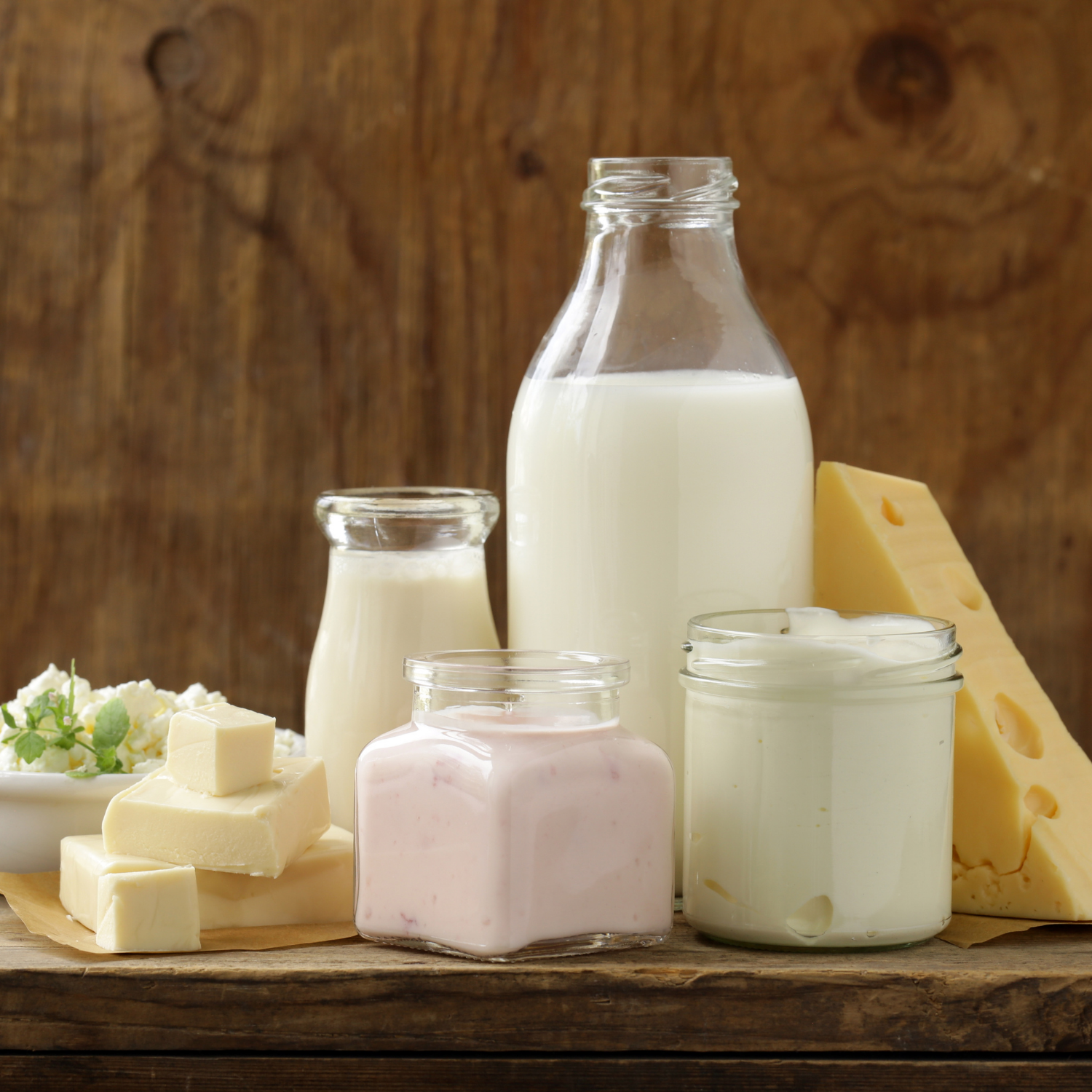



Weekly beef and dairy digest: beef exports rebound but fall short and the USDA releases its full dairy report
US beef exports gain ground, but cannot reverse recent decline.US weekly export numbers for beef
Net sales of 10,100 metric tonnes (MT) reported for 2020 were up noticeably from the previous week, but down 15 percent from the prior 4-week average.
Increases primarily for Japan (3,800 MT, including decreases of 800 MT), South Korea (2,200 MT, including decreases of 1,300 MT), Canada (1,700 MT, including decreases of 100 MT), Mexico (700 MT, including decreases of 200 MT), and China (700 MT, including decreases of 200 MT), were offset by reductions primarily for Hong Kong (200 MT) and Colombia (100 MT).
For 2021, net sales of 4,500 MT were primarily for South Korea (1,300 MT), Mexico (1,200 MT), Japan (800 MT), and Taiwan (500 MT). Exports of 19,300 MT were up 6 percent from the previous week, but unchanged from the prior 4-week average. The destinations were primarily to South Korea (4,800 MT), Japan (4,600 MT), Mexico (2,900 MT), China (2,400 MT), and Canada (1,300 MT).

USDA’s monthly livestock outlook
Following is USDA’s just released monthly livestock, dairy and poultry outlook.
Forecasts for export shares of US production for red meat, poultry, and eggs present a varied picture for 2020 and 2021.
Beef’s export share of production for this year—10.7 percent—is lower than in 2019, due mostly to lower exports to Mexico. Higher exports in 2021 are expected to increase beef’s export share to 11.3 percent. Pork’s export share of production is expected to increase from 22.9 percent in 2019 to 25.8 percent both this year and in 2021, due primarily to strong exports to China.
Milk production forecasts have been raised for 2020 and 2021 due to higher expected milk cow numbers. From the week ending 7 November to the week ending 5 December, wholesale prices reported in the USDA National Dairy Products Sales Report for Cheddar cheese fell precipitously.
Over the same period, prices for non-fat dry milk and butter declined, but the price for dry whey increased. The all-milk price forecast for the fourth quarter of 2020 has been raised by $0.0.5 to $19.80 per hundredweight (cwt). The 2020 annual all-milk price forecast rounds to $18.25 per cwt, unchanged from last month’s forecast. The all-milk price forecast for 2021 has been lowered by $1.10 to $16.60 per cwt.
Developments in dairy market from 7 November - 5 December
Wholesale Cheddar cheese prices, as reported in the USDA National Dairy Products Sales Report (NDPSR), fell precipitously. According to the report of 9 December, the price of 40-pound blocks of Cheddar cheese fell 82.0 cents to $1.9452 per pound, and the price for 500-pound barrels (adjusted to 38-percent moisture) fell 84.6 cents to $1.5633 per pound.
The prices of butter and non-fat dry milk (NDM) declined to $1.3881 per pound (-6.9 cents) and $1.0770 per pound (-1.9 cents), respectively. The dry whey price was the exception to the declines, increasing by 4.4 cents to $0.4126 per pound.
Dairy wholesale product prices from USDA National Dairy Products Sales Report (dollars per pound) For the week ending 7 November - 5 December Change Butter 1.4573 1.3881 -0.0692 Cheddar cheese 40-pound blocks 2.7651 1.9452 -0.8199 500-pound barrels 1 2.4089 1.5633 -0.8456 Non-fat dry milk 1.0962 1.0770 -0.0192 Dry whey 0.3686 0.4126 0.0440 1 Adjusted to 38-percent moisture.
National Dairy Products Sales Report, 9 December 2020.
The most recent weekly average CME cheese spot prices have been lower than the most recent NDPSR prices. After the CME average weekly price for 40-pound blocks reached a fall peak of $2.7745 per pound for the trading week ending 30 October, the price fell to $1.6055 for the week ending 4 December before increasing slightly to $1.6285 for the week ending 11 December.
The price of 500-pound barrels reached a record high of $2.4755 per pound for the week ending 30 October, then plunged the following weeks to $1.4045 for the week ending 20 November, before rebounding the following weeks to $1.4225 for the week ending 11 December. The most recent weekly average CME spot prices for butter, NDM, and dry whey have been higher than the most recent NSPSR prices, at $1.5140, $1.1385, and $0.4660 per pound, respectively.

While USDA has dairy product price data for November and the early part of December, supply and use data are not yet available. Several factors could explain recent movements in dairy product prices. Dairy product prices typically decline in the last couple of months of the year after the holiday buying season comes to an end.
USDA Dairy Market News (DMN) states that milk production is increasing throughout the country. A large cheese plant in Michigan began operation toward the end of October; a larger supply of cheese would contribute to lower cheese prices. Lower foodservice orders may be depressing prices. There are considerable uncertainties about foodservice as the sector continues to struggle with capacity restrictions and potential shutdowns. DMN reports tight markets for whey products. Strong demand, domestically and internationally, is likely contributing to the recent increase in US whey prices. Recently, US dairy product prices have been competitive with foreign export prices.
The USDA's market comparisons
For the month of November, Oceania and Western Europe skim milk powder (SMP) export prices averaged $1.28 and $1.17 per pound, respectively. The dry whey price for Western Europe averaged $0.42 per pound. Oceania and Western Europe butter export prices averaged $1.75 and $1.83 per pound, respectively.
The Oceania export price for Cheddar cheese averaged $1.68 per pound in November. Discussion of Recent Supply and Use Data Milk production growth was robust in September and October. According to the USDA National Agricultural Statistics Service (NASS) Milk Production report of 18 November, October milk production was 18.560 billion pounds in October, 2.3 percent higher than October 2019 (the same year-over-year percentage growth as September).
NASS revised its September estimate for milk cow numbers upward by 10,000 head to 9.376 million, and NASS estimates that the average for October increased to 9.390 million head. The estimate for October average milk per cow was 1,977 pounds.
For each week since the week ending 9 May, federally inspected milk cow slaughter has been less than the corresponding week of the previous year. Dairy exports on a milk-fat milk-equivalent basis totalled 706 million pounds in October, 41 million lower than September but 7 million higher than October 2019.
On a skim-solids milk-equivalent basis, October exports totalled 4.234 billion pounds, 511 million higher than September and 588 million higher than October 2019. US goods have become more attractive abroad as the US dollar value has declined over several months.
The all-milk price forecast for 2020 rounds to $18.25 per cwt, unchanged from last month’s forecast. Dairy Forecasts for 2021 Based on recent data, the forecast for the 2021 average size of the milking herd has been raised to 9.395 million head, 15,000 higher than last month’s forecast. The forecast for milk per cow in 2021 is unchanged at 24,090 pounds per head. With higher expected milk cow numbers, the milk production forecast for 2021 is 226.3 billion pounds, 0.4 billion higher than last month’s forecast.
The forecasts for 2021 dairy exports have been raised from last month’s forecasts to 9.6 billion pounds on a milk-fat basis (+0.1 billion) and to 48.7 billion pounds on a skim-solids basis (+0.6 billion).
Exports of whey products, especially to China, are expected to continue growing. With more competitive US prices, higher exports of cheese are expected. The forecast for 2021 imports on a milk-fat basis has been lowered to 6.8 billion pounds, 0.1 billion lower than last month’s forecast, due to lower expected imports of various dairy products.
On a skim-solids basis, the import forecast for 2021 is 5.6 billion pounds, unchanged from last month’s forecast. The forecast for 2021 domestic use on a milk-fat basis is 222.5 billion pounds, unchanged from last month’s forecast. On a skim-solids basis, the forecast for domestic use has been lowered by 0.4 billion pounds to 182.3 billion pounds. Ending stock forecasts for 2021 have been raised to 14.5 billion pounds on a milk-fat basis (+0.4 billion) and 10.2 billion pounds on a skim-solids basis (+0.2 billion).
Read Jim Wyckoff's latest updates on the global poultry industry on The Poultry Site, and see his latest analysis of the hog market on The Pig Site.
TheCattleSite News Desk
IMPORTANT NOTE: I am not a futures broker and do not manage any trading accounts other than my own personal account. It is my goal to point out to you potential trading opportunities. However, it is up to you to: (1) decide when and if you want to initiate any traders and (2) determine the size of any trades you may initiate. Any trades I discuss are hypothetical in nature.
Here is what the Commodity Futures Trading Commission (CFTC) has said about futures trading (and I agree 100%): 1. Trading commodity futures and options is not for everyone. IT IS A VOLATILE, COMPLEX AND RISKY BUSINESS. Before you invest any money in futures or options contracts, you should consider your financial experience, goals and financial resources, and know how much you can afford to lose above and beyond your initial payment to a broker. You should understand commodity futures and options contracts and your obligations in entering into those contracts. You should understand your exposure to risk and other aspects of trading by thoroughly reviewing the risk disclosure documents your broker is required to give you.




